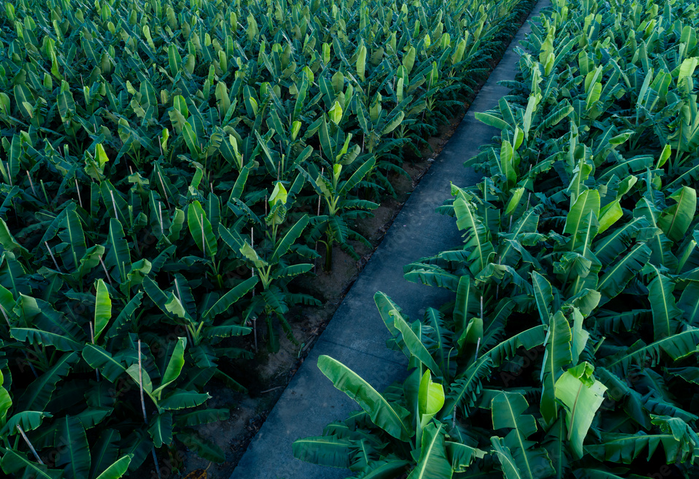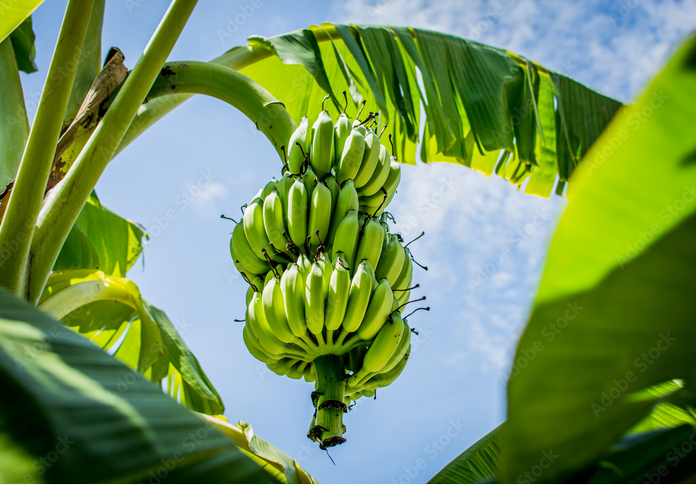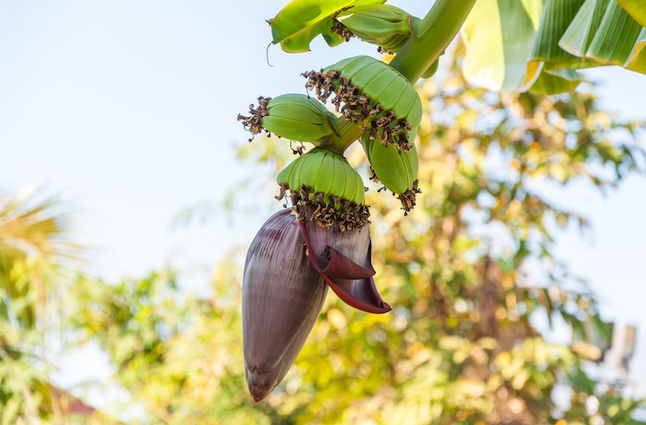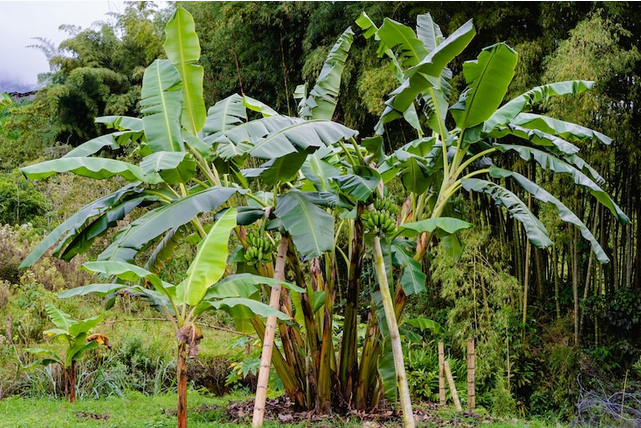Can Banana Tree Grow in California? Bay Tree Service
Bananas are a plant that can be successfully grown in Northern California, but only if they are provided with the right soil conditions and are protected from temperatures that sometimes dip below freezing.

What Is the Right Climate for Banana Plants?
Bananas can be grown easily and well throughout most of Southern California between the mountains and ocean, specifically Sunset Zones 24 to 21. Think of areas the marine layer rolls over consistently each summer night. It is where you will find the perfect combination of humidity and winter warmth.
Which is the Right Location to Plant Your Banana?
When it comes to looking for the right location to plant your banana, it is important to choose one with rich, properly drained soil, is protected from strong winds, and receives full sun. The site will also have to be safe from frost, which is why you need to ideally make it close to a structure such as your house or any sizable object capable of storing heat during the day and then radiating it out during the night.

What Watering and Soil Conditions Do Banana Plants Like?
To keep your banana plants happy in Southern California, the most important thing you will need to do is water it during the dry months of the year. Bananas require just little water during winter when they are almost dormant, but they love to drink in the summer. Give your banana plants enough water when the air is warm and you will see it unfurl new leaves before your very eyes.
Fertile soil is another thing that banana plants truly appreciate. While many plants appreciate fertile soil, bananas appreciate it more than most. They will grow and fruit even if you never actually fertilize them. Bananas generally grow faster in fertile soil and produce much bigger bunches in such conditions too.
Can Banana Trees Grow in the Bay Area?
Estimates of the temperatures that banana trees can tolerate range from 30 to 20 Degrees Fahrenheit. It puts much of the Bay Area in the gambling zone. Temperatures might drop too low or not in any given winter. The annual few days to a week of freezing winter weather might do some damage, but your trees will still look good in summer.
What Banana Varieties Are Grown in Southern California?
You might be surprised to learn that there are numerous kinds of bananas out there. The ones that you likely buy at the grocery store are one type known as Cavendish. When you grow your own, however, you will likely grow a different type and experience new banana textures and flavors.
You might like them more or less, but they will not be just like the ones from the store: perhaps smaller, perhaps not as sweet, perhaps fatter, perhaps firmer, perhaps with larger seeds, perhaps harder to peel, and perhaps with whiter flesh, etc.
How Do Banana Plants Grow?
Banana plants are not individual like tomato plants are. Neither are they trees as orange trees are. Banana plants are comparable to large stalks of grass, which grow out of a bulb-like base known as a rhizome.
The rhizome continually sprouts up new banana plants. People often refer to the group of banana plants emerging from one common rhizome as a “mat”, but some refer to it as a clump, while others still refer to it as a family.
Why Does It Matter How Banana Plants Grow?
The bad is that you may be forced to control the spread of the banana mat according to the available space. Fortunately, this can be easily done by using a shovel to chop off the baby banana plants once they pop up.
The good is that the original banana plant is constantly multiplying itself. If you would like to have additional banana plants in a different part of the yard, or you want to give your neighbor some, you can pick a shovel and cut a small plant out of the mat and either transplant it or give it away.

You want to be sure that once you put in a single banana plant, you will have many more banana plants in a few years. That’s both good and bad.
How to Plant a Banana Tree?
Dig out a hole that’s twice the width and depth of the container the banana plant is living in currently to prepare the ground where to plant your banana.
Add 2 heaping handfuls of compost and 1 pound each of worm castings, landscape mix, and a half-pound of greensand into the bottom of this hole. Mix all these ingredients together with 1 shovelful of dirt and then place the unpotted banana with its dangling root ball into the hole before burying it with the dirt you have taken from the pit.
When burying the young banana plant, mix into the dirt, an extra 4 handfuls of compost, 1 pound each of landscape mix, a half-pound of green sand, azomite, and worm castings. If there are gophers in the yard, it can be a good idea to plant your new banana in a cage.
How Should You Space Your Banana Plants?
If planting multiple varieties, leave at least 6 to 8 feet between plants for two key reasons. First, they will spread. Second, putting them too close only leaves them competing with one another for nutrients. Banana plants are able to survive this since they are tropical weeds, but they won’t produce any of the delicious fruit.
If you realize too late that you have spaced your banana plants too close together so that one of them (typically in the middle) is sickly or not thriving, dig a trench between the more aggressive plants and the one that needs help. This will cut the more aggressive plant’s roots thus creating a barrier between it and the weaker ones. Once you dig the trench and cut the roots, back-fill it with the previously removed soil.

What Time of Year Does a Banana Plant Flower?
Bananas are a non-seasonal crop and typically flower whenever it feels like it. They also become ready to eat whenever they feel like it. The fruit ripening and flowering happens from spring through fall in Southern California, but that’s just because banana plants here tend to be very active in the spring through fall.
A banana plant will sometimes begin fruiting in fall and then the baby bananas just sit like statues throughout winter until it warms up in spring when they resume maturing. Professionals say that banana plants bloom 15 to 24 months after planting. It takes 3 to 4 months for the flower stalk to mature, and once the fruit bunches develop, remove the red flower head 6-inches past the last banana formed.

What Should You Do Once the Banana Plant Has Flowered?
You will watch a fascinating display. A long and thick stalk that has a purple spearhead at its end thrusts out from the top of the trunk known as a pseudo-stem, and the groups (usually referred to as “hands” of bananas form along with the stalk.
The number of bananas that grow on that single stock can be upwards of 50, and they can get so heavy that the plant eventually topples over. Fortunately, this only happens sometimes. If that seems likely to happen, you should consider building a prop to support the stalk.
You can make a simple prop with 2×2 wood that’s connected in one spot with a bolt, such that it can be opened in the shape of an X. The X is then wedged under the leaning plan.

How Long Does It Take for a Banana Plant to Flower and Its Fruit to Ripen?
It takes banana plants significantly longer to fruit in Southern California compared to the tropics because due to the cool winters that make banana plants to almost stop growing. Most banana plants, however, will send out a flower sometimes about 2 years after planting, but this will depend on the soil, variety, weather, and watering.
It then takes several more months for your bananas to grow fat and ripen on the flower stalk. So, planting to eating ends up being around 2 years or more. You can pick the bananas once they are plump (no longer angular) but still green, as commercial bananas usually are, or you can leave them on the plant until they ripen and turn yellow.
You have the option of either cutting off one banana at a time, ideally starting at the top where you will find the most mature ones, or you can harvest the entire bunch at once and hang it somewhere, such as your kitchen. This latter option can be a more convenient option with banana varieties that are tall and hard to reach.
Banana Trees Produce Bananas How Many Times in a Year?
Each pseudo-stem produces just one banana cluster before it dies, but new stalks are produced continuously from the rhizome to take their place. Consequently, banana fruit production continues indefinitely.
For more help, please call Bay Tree Removal Service, Hayward, CA at (510) 250-5158
